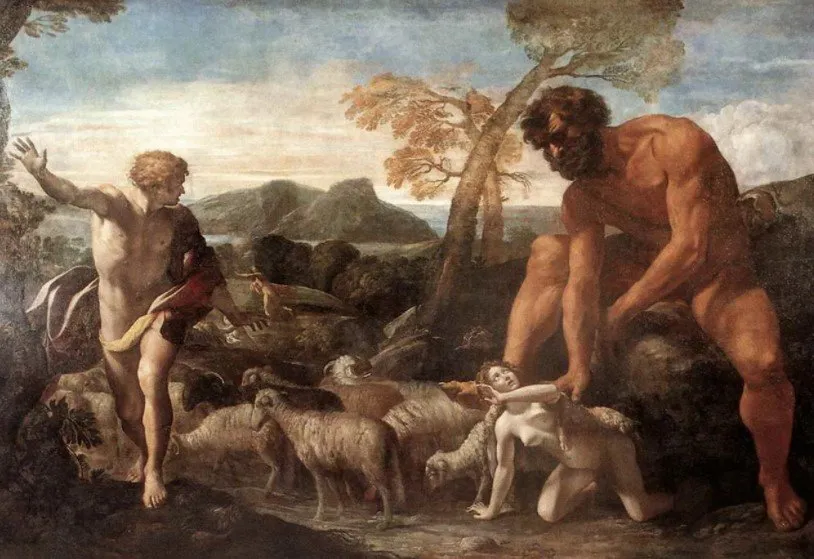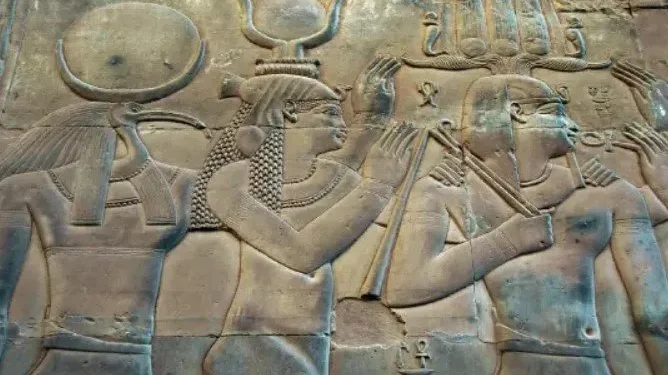Modern scientists have long preferred to limit the history of human civilization to a few thousand years, to which the abyss of the wild and cruel Stone Age allegedly stretched.
But the discovery of such ancient cities as Chatal-Guyuk in Asia Minor or Jericho in Israel made us look at this issue a little differently and extend the cultural period of mankind’s existence by about four to five millennia.
However, according to ufoac.com, as for the written evidence of the ancients, science continues to take into account only those that it recognized several decades, or even a hundred years ago.
Meanwhile, there are documents that allow us to calculate the history of the Earth’s civilization by at least tens of thousands of years.
Paradoxes from serious scientists
George Sinzell was reputed to be an outstanding historian. He lived at the turn of the VIII and IX centuries after the Birth of Christ.
For many years Syncellus preached in Palestine, was the personal secretary of Patriarch Tarasius of Constantinople (784-806), after whose death he retired to a monastery, where he engaged in writing. The most important work of Syncellus is considered to be “Selected Chronography”.
When creating it, the historian used the works of ancient authors such as Josephus, Manetho and the famous Babylonian priest Beros, in whose works one can find a lot of highly unusual.
The erudition of George Syncellus even allowed him to reasonably criticize the father of church history, Eusebius of Caesarea, for falsifying Egyptian chronology.
The Egyptians have a certain plate called the “Old Chronicle”; it contains 30 dynasties over 113 generations over a period of 36,525 years. The first group (dynasty) of princes – Aurites, the second – Mestroenes, the third – Egyptians.
The “Chronicle” says “No time has been determined for Hephaestus, since he was both day and night. Hephaestus’ son Helios ruled for 30 thousand years. Then Chronos and the 12 gods ruled for 3,984 years; the next were the demigods, eight in number, who ruled for 217 years.”
Syncellus himself, in particular, wrote:
“The philosopher Simplicius of Cilicia, one of the founders of the Alexandrian school of Neoplatonism, distinguished by his businesslike nature and strict attitude to facts, in the VI century reported that he had heard that the Egyptians had been making astronomical observations for the past 630 thousand years.
“Even if he was wrong, and it should be about months, then an impressive period of 52.5 thousand years is still running up.”

Zodiac – evidence of antiquity
Even Manetho, whose list of the dynasties of the pharaohs is the cornerstone of modern Egyptology, cited information in favor of a much deeper antiquity of Egyptian civilization. than is now commonly believed. In the surviving fragments of his “History of Egypt” there are the following words:
“The first man [or God] in Egypt is Hephaestus, who is also known to the Egyptians as the discoverer of fire. The heir of his son Helios [the Sun] was Sosis, then in turn Kronos, Osiris, Typhon, the brother of Osiris, and finally. Horus, son of Osiris and Isis. They were the first rulers of Egypt.
“After that, the royal power passed from one to the other, without interruption, up to Bidis for 13,900 years. Then for 1255 years gods and demigods ruled, and again for 1817 years another royal family gained power in the country.
“Then another 30 Memphis kings ruled for 1790 years, and after them another 10 kings ruled for 350 years. Then came the reign of the “spirits of the dead”, which lasted 5,813 years.”
Manetho wrote:
“The arrangement of the stars, as it was approximately 90 thousand years ago, is demonstrated on the zodiac decorating the ceiling of the temple of Hathor in the Egyptian city of Dendera.
“Moreover, this zodiac is so magnificent that the original ceiling was removed and transported to Paris during the Egyptian expedition of Napoleon I, and a plaster copy was laid instead of the original.
“Astrological symbols of the zodiac, as the British ufologist Raymond Drake writes, according to the precession of the equinoxes, mean the passage of three and a half large cycles of 25,800 years each.”
The originally built temple has long since turned to dust, but the unique zodiac was copied by initiates who sought to preserve this evidence of the deep knowledge of the ancients.
The dating of 90 thousand years shocks our modern minds, accustomed to limit the history of civilization to four or five millennia, but similar zodiacs were found in the temples of northern India, and on Babylonian clay tablets.
Royal lists
It is curious that the Chaldeans (Semitic pastoral tribes that inhabited the outskirts of Babylonia in the first half of the first millennium BC) also had so-called royal lists that operated with dates of unimaginable antiquity.
The history of the Sumerians who preceded the Babylonians in Mesopotamia, according to these lists. it began with the creation of man. In the Bible, we are talking about 10 forefathers, if we count from Adam; among the Sumerians, they were called the oldest kings, and there are also 10 of them.
The Israeli forefathers were distinguished by extraordinary longevity, but the “Methuselah age” against the background of the life expectancy of the Sumerian rulers does not seem so great.
According to one of these royal lists, in which only eight kings appear, they reigned for 241,200 years. According to another, which mentions all 10, – 456 thousand years. After that, the flood broke out, but humanity was reborn thanks to the surviving righteous Utnapishtim. A new dynasty of kings arose, whom descendants perceived as gods and demigods.
There were 33 kings in the dynasty, who ruled for a total of 24,510 years. After that, there were several other not so long-lasting dynasties, but the history that science now takes seriously begins with the death of the epic hero Gilgamesh around the beginning of the XXVI century BC.
How many people were there in total?
Very unusual information about the past of mankind is also contained in the mythology of the Aztecs and Maya. It is not even about one, but about several human beings, which definitely echoes the teachings of the theosophists.

Traces of branched underground structures, the age of which can hardly be estimated, are found in many corners of our planet, There are such structures in South America, and in the African Sahara Desert, and in India, and in Western Europe, and and all over the world. For example, in Karelia and in the Zhiguli Mountains.
The third humanity in the Aztec myths are called intelligent monkeys, who died as a result of some cataclysm. The fourth race was similar to modern humans and drowned in the waters of the Flood. The fifth lives and develops to this day.

Aztec sources allocate from four to five thousand years for the existence of each of these human beings. But there is one curious nuance here.
The Aztecs and Maya, in addition to the usual dating, also operated on a number of so-called sacred years, the duration of which is, for example, -20 years for the holy year of katun, 400 years for baktun, eight thousand years for pic-tun, and 64 million years for the longest in this series of alautun! So it would also be necessary to clarify what years, in fact, the Mesoamerican Indians are talking about in such chronicles.
Of course, this kind of dating looks frankly frightening, or even delusional. Perhaps they could be brushed aside, as, by and large, is done by serious science.
However, the artifacts of unimaginable antiquity, which were discovered in different parts of our planet by researchers and random people, I think, make us take the “oddities” of ancient documents cited in this article more seriously. Summing up our small research, I want to draw your attention to the fact that we still do not have reliable information. Yes, there are tunnels, but this does not mean any cataclysm.
The texts do not answer the question, where did these other races come from? Why weren’t the Aztecs and Mayans destroyed in those unfortunate periods? Unfortunately, there are no answers to these questions yet. But we will continue to research and keep you informed.
























